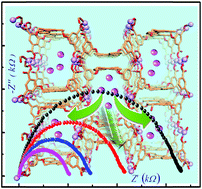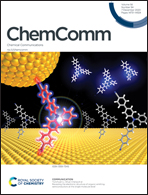Porous Li-MOF as a solid-state electrolyte: exploration of lithium ion conductivity through bio-inspired ionic channels†
Abstract
A rarely porous Li-MOF (Li-AOIA) with surface area of 605 m2 g−1 was employed for the formation of an emerging class of solid-state lithium ion electrolytes. Infiltration of LiBF4 into Li-AOIA afforded Li-AOIA@BF4 with ionic conductivity of 1.09 × 10−5 S cm−1 at room temperature and an activation energy of 0.18 eV.



 Please wait while we load your content...
Please wait while we load your content...